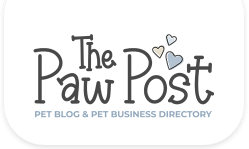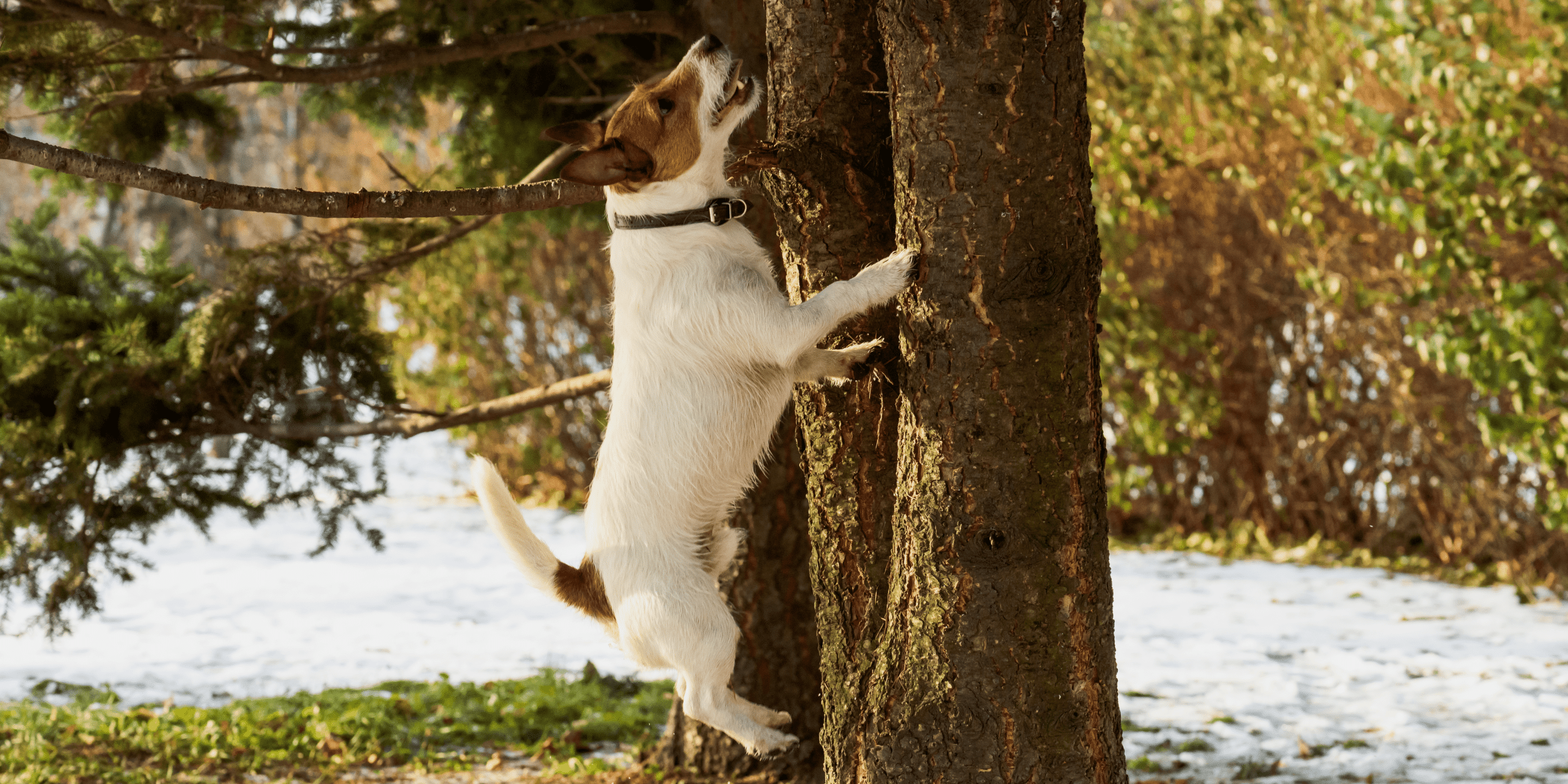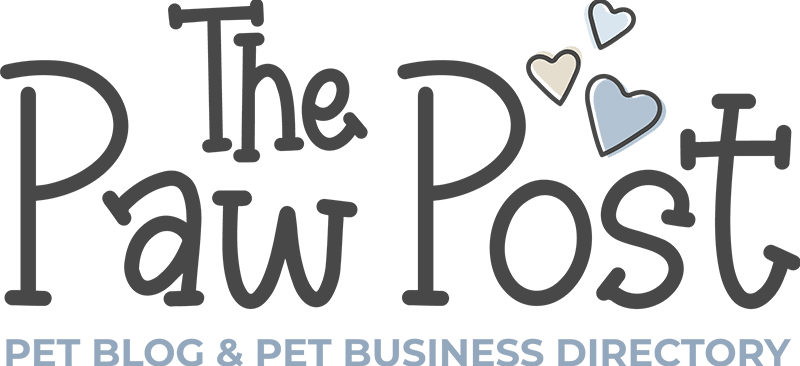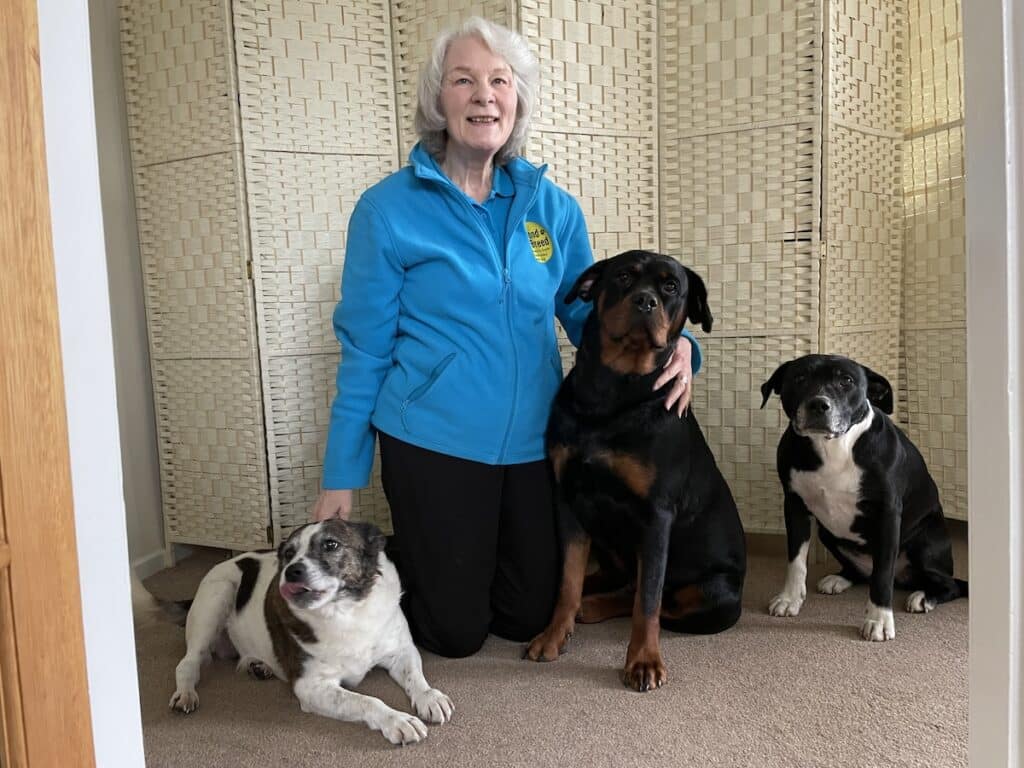Have you heard about Prey Drive and how it affects our dogs and their behaviour?
If you’re wondering what it is, it’s basically the desire to chase things, and Tracey McLennan is a dog trainer who has been studying this for YEARS.
This blog is for you if you have a dog who can’t help but run after small animals or goes tearing off after deer deep into the woods.
You’ll love it if you fancy being able to better understand your dog, and to spend less time standing with a lead in your hand, yelling their name and being ignored.
Tracey, who lives in Scotland with her Cocker Spaniel Ren, has been studying canine behaviour and prey drive for over 20 years and shares how it manifests differently in each dog, and ways we can manage it.

Tracey, how did you get into working with dogs and prey drive specifically?
I was thrown into this work because of my own high prey drive Bull Mastiff named Calgacus, over 20 years ago.
I chose the breed because they’re NOT supposed to have prey drive, but by the time he was a year old, he was chasing deer and he would catch kill and eat rabbits if he could.
This was upsetting for me, because that was exactly what I didn’t want in a dog. So, my work started there.
I went away and studied behaviour and did a degree in dog training, and Calgacus eventually became a very well behaved dog.
I thought I’d found the secret after studying so much around prey drive, then, in 2007, along came Collie cross Cuillin who also loved chasing things.
Nothing I’d learned first time round with Calgacus worked and I was told by so many trainers and professionals, ‘I don’t think there’s anything you can do about this,’ but I was determind.
So I did a whole lot of new learning and eventually got to the point where Cuillin would follow the scent but still keep an eye on where I was, so I didn’t have to worry.
This led to me teaching others, and in 2021 I was able to leave my corporate background and train dogs full time.

What is prey drive?
In very simple terms, prey drive describes how much a dog wants to interact with a prey animal – it’s an instinct.
The most common prey animals include rabbits, squirrels, deer, and birds. Less often it may include cats, and for some dogs, smaller dogs.
What does prey drive look like?
While chasing is the most common prey drive activity, there are several you may see:
- Chasing – to catch or kill, or simply for the thrill of it
- Sniffing – searching for prey using smell
- Stalking – staring or crouching
Then, it’s about looking at what happens next – this tells us the purpose.
Do they stop when they reach the animal? Or grab hold and shake their heads? Do they hold it still in their mouths or try plucking it apart? Do they eat it?
Recognising our dog’s purpose for chasing can help us understand how to manage it.

Are some breeds more predisposed than others?
While any dog can exhibit signs of prey drive behaviour, it’s certainly more prevalent in some breeds than others.
Breeds most likely to have a high prey drive include:
- Gun dog breeds (Retrievers, Spaniels, Pointers, Setters)
- Hounds
- Terriers
- Herding/pastoral breeds (Shepherds, Collies, Sheepdogs, Cattle Dogs, Shelties)
- Working class breeds (Boxers, Bernese Mountain Dogs, Mastiffs, Dobermans)
These dogs are all bred to perform specific tasks, all of which are dependent on having a strong prey drive.
The breeds less likely to have a high prey drive include:
- Toy breeds (Maltese, Pug, Pomeranian, Bulldog)
- Livestock guardian breeds (Maremma Sheep Dogs, Turkish Kangal)
Toy breeds have been specifically bred for companionship, so they very rarely exhibit prey drive.

How do I train my dog with a high prey drive?
There are several things to consider when going out with a dog that has a strong prey drive.
Safety
Keeping your dog safe is the number one priority–they can get lost or injure themselves, their owner, or other people.
We can do this by finding safe areas to let our dogs play and deciding on appropriate leading equipment.
Depending on the circumstances of our environment, we may feel safe enough to let them off their lead or perhaps give them a long line.
Observing your dog and the environment
Understanding your dog’s cues and interjecting early will save you lots of headaches.
The environment you’re in can also make a huge difference. If you’re aware of what’s going on around you, you’re less likely to be blindsided by a dog yanking you off your feet.
Stay on top of observing your dog and the environment so you can anticipate what your dog is feeling at any given moment.
Training
I’ve seen a lot of success in people training their dogs to do something that is not compatible with going after prey.
This could be a recall or stop-and-wait approach.
You must keep at it though! Training takes time and commitment and if both you and your dog are going to stay engaged, you need to make it fun.
Rewards
We want to reward the behaviours we want to continue seeing. If you want a recall, reward them with food each time they come back.
If you’re rewarding calmness, offer treats when they show that behaviour.
Do it early and do it often to reinforce your expectations.
Substitutes
Finally, find a substitute for the activity your dog likes the most. If they enjoy chasing, make a game out of it and let them chase something you have control of.
If they enjoy sniffing and hunting, be present with them instead of immediately pulling them away.
If they like to go after rabbits and hold them or shake them, find dog toys with rabbit fur in them, even a teddy bear can help.
And if they like carrying things around, a teddy bear from a charity shop can be a nice substitute, or even an old sock or a sponge.

What happens if they don’t have an outlet?
It’s nearly impossible to avoid all prey animals and, like humans, when dogs don’t get to do what they want they get frustrated.
When they repeatedly are not allowed to do what their prey drive urges them to do, they can develop unwanted behaviours like lead aggression, jumping up, biting, and stealing household items.
The best thing you can do for your high prey drive dog and your sanity is to learn their triggers, manage your environment, reward positive behaviours, and offer sufficient outlets.

Final thoughts on dogs that love chasing from ME!
Having a dog that loves chasing squirrels and rabbits, or following a deer’s scent deep into the woods can make walks a little fraught.
As a mum to two dogs with a strong prey drive, my first dog Daisy and now Patch, both terriers, I can certainly relate to the anxious feeling that comes with walking a new path or daring to let them off the lead!
You worry they may get lost, harm themselves or another animal, or in one of my experiences, deal with a farmer who wants to shoot your dog.
Though it can be stressful for us, these instincts bring our dogs great joy in being able to do what they’re designed to do.
I hope Tracey’s guidance on this helps you better understand this topic, and do get in touch with her and share your thoughts.

Want to learn more about prey drive? Tracey has loads of helpful resources.
Get her free recall guide: https://bestdoglearningandstuff.co.uk/#recallfree
Learn more about prey drive with her free eBook: https://bestdoglearningandstuff.co.uk/free_gifts/#understandprey
Check out her free webinar on observations: https://bestdoglearningandstuff.co.uk/free_gifts/#aceingprey
Tracey’s also got online classes covering all sorts of things to help with prey drive. https://bestdoglearningandstuff.co.uk/online_products/
She recommends The Gundog Club, who are committed to only having reward based trainers on their list so they are a good resource for people looking for gundog training. https://thegundogclub.co.uk/
If you enjoyed this post, you might also like Why does my dog chase squirrels and what can I do with Sue McCabe or What is canine hoopers and how can it help my dog.





